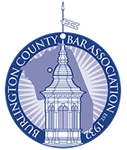An occupational disease or occupational illness is one that occurs specifically because of a worker’s activities and responsibilities or exposure to workplace environmental conditions. Many workers have an occupation that requires them to perform dangerous tasks or that exposes them to hazardous substances. Others have jobs that can cause illness over time through repetitive tasks and ergonomically inefficient work conditions. It may take months or years for a worker to notice the effects of exposure to a harmful substance and not every worker responds in the same way. Like work injuries, occupational diseases are also covered by the workers’ compensation system.
Examples of common occupational diseases include:
- Cancer from exposure to industrial carcinogens such as asbestos
- Respiratory diseases such as COPD and black lung, from inhaling workplace chemicals and particulate matter (microscopic solid or liquid droplets)
- Skin diseases such as dermatitis from exposure to toxic chemicals
- Infectious diseases from exposure in health care settings
- Hearing loss from exposure to high levels of noise from gas powered landscaping tools, manufacturing equipment, and construction equipment
- Repetitive stress injuries such as carpal tunnel syndrome and tennis elbow caused by doing the same repetitive tasks without enough breaks and working in awkward positions
- Mental health disorders such as post traumatic stress disorder (PTSD) for workers exposed to trauma
Occupational diseases can cause serious, often irreversible damage making it impossible for a worker to continue to earn a living.
Who is at Risk?
Workers in many different professions may be at risk for developing an occupational disease. Employers are responsible for maintaining a safe work environment and providing workers with the appropriate personal protective equipment (PPE). Despite all precautions, it may be impossible to eliminate exposure to disease-causing hazards in the workplace.
Anyone exposed to airborne irritants or toxic substances can develop a respiratory disease. This includes miners, stone cutters, farm workers, workers in the carpet industry, and construction workers. Many of these toxins can also cause cancer. Symptoms of respiratory diseases are wheezing, trouble breathing, hacking persistent cough, fatigue, and frequent respiratory infections.
The cleaning agents used by janitors, kitchen staff, hairdressers, and other workers who do industrial cleaning or use chemical solvents can cause skin problems like dermatitis. Symptoms include redness, swelling, blistering, or weeping skin.
Repetitive stress disorders can affect cashiers, factory workers, office workers, and anyone who does the same task each day at their job. Carpal tunnel syndrome is a condition in which the nerves and tendons passing through the wrist become swollen and sore. The fingers may become tingly, and the pain can make it difficult to accomplish simple tasks such as brushing teeth. Left untreated, carpal tunnel syndrome can do permanent damage.
Exposure to toxic chemicals like lead and arsenic is an issue for many workers including painters, welders (from welding fumes), agricultural workers, plumbers, smelters, and shipbuilders. Lead poisoning can go many years unnoticed before symptoms like weight loss and memory issues appear. After being absorbed into the body, lead collects in the bones and can cause brain damage and kidney disease.
Construction workers, landscapers, factory workers, and anyone who works in an occupation with loud and constant noise is at risk for hearing damage and should always wear protective gear.
Preventing Occupational Diseases
The Centers for Disease Control (CDC) and the National Institute for Occupational Safety and Health (NIOSH) have guidance for employers to protect their workers and prevent the occurrence of occupational diseases. There are three main steps to deal with safety hazards that can affect workers’ health:
- Elimination of hazards is the first step. If a hazard cannot be eliminated, then a substitution should be made.
- Isolation of the workers from the hazard is the next step and should be achieved through engineering controls. Administratively, exposure for workers can be mitigated through rotation of tasks, shortening of shifts, and rescheduling of break time. Workers should always be trained on how to recognize risk factors.
- Use of personal protective equipment is the last step that can be used after all other precautions have been taken. PPE must be correctly fitted to each worker, and they must receive training on how to use it properly.
Compensation for Occupational Diseases and Illnesses
Workers’ compensation covers most occupational diseases however it is important to file a claim before the deadline which is two years from the date when you know you have the disease. You may be barred from collecting benefits if you willingly exposed yourself to a known hazard by not using required PPE or did not otherwise comply with safety requirements. A successful claim could provide benefits for medical care and lost wages, as well as disability benefits. The dependents of an employee who dies from an occupational disease may receive death benefits to cover funeral expenses, burial costs, and wage compensation.
Compensation claims for occupational diseases are more complicated than claims for work injuries. It can be difficult to prove that your illness was caused specifically by exposure to a harmful substance or conditions in your workplace. Most insurance companies will investigate thoroughly and challenge your claim before agreeing to pay any benefits. Because of this you may need the assistance of a qualified workers’ compensation attorney who has experience filing claims for occupational diseases.
Correctly calculating the amount of benefits that you are entitled to is vital to your future wellbeing. If you are being offered a settlement you must know if the amount being offered is fair. Never sign documents from the insurance company without first having them reviewed by an experienced attorney. Most workers’ compensation lawyers will not charge you for an initial consultation so there is no risk to you in meeting with someone.
Cherry Hill Workers’ Compensation Lawyers at Pietras Saracino Smith & Meeks LLP Fight for the Rights of Workers with Occupational Diseases
Filing a claim for an occupational disease can be very complicated and stressful. Let the experienced Cherry Hill workers’ compensation lawyers at Pietras Saracino Smith & Meeks LLP help you navigate the process. We will handle all the deadlines for paperwork and communications with the insurance company for you. Schedule a free consultation about your case by calling 856-761-3773 today or contacting us online. From our offices in Cherry Hill, New Jersey we represent ill and injured workers throughout South Jersey including those in Camden, Cinnaminson, Delran, Maple Shade, and Pennsauken.













